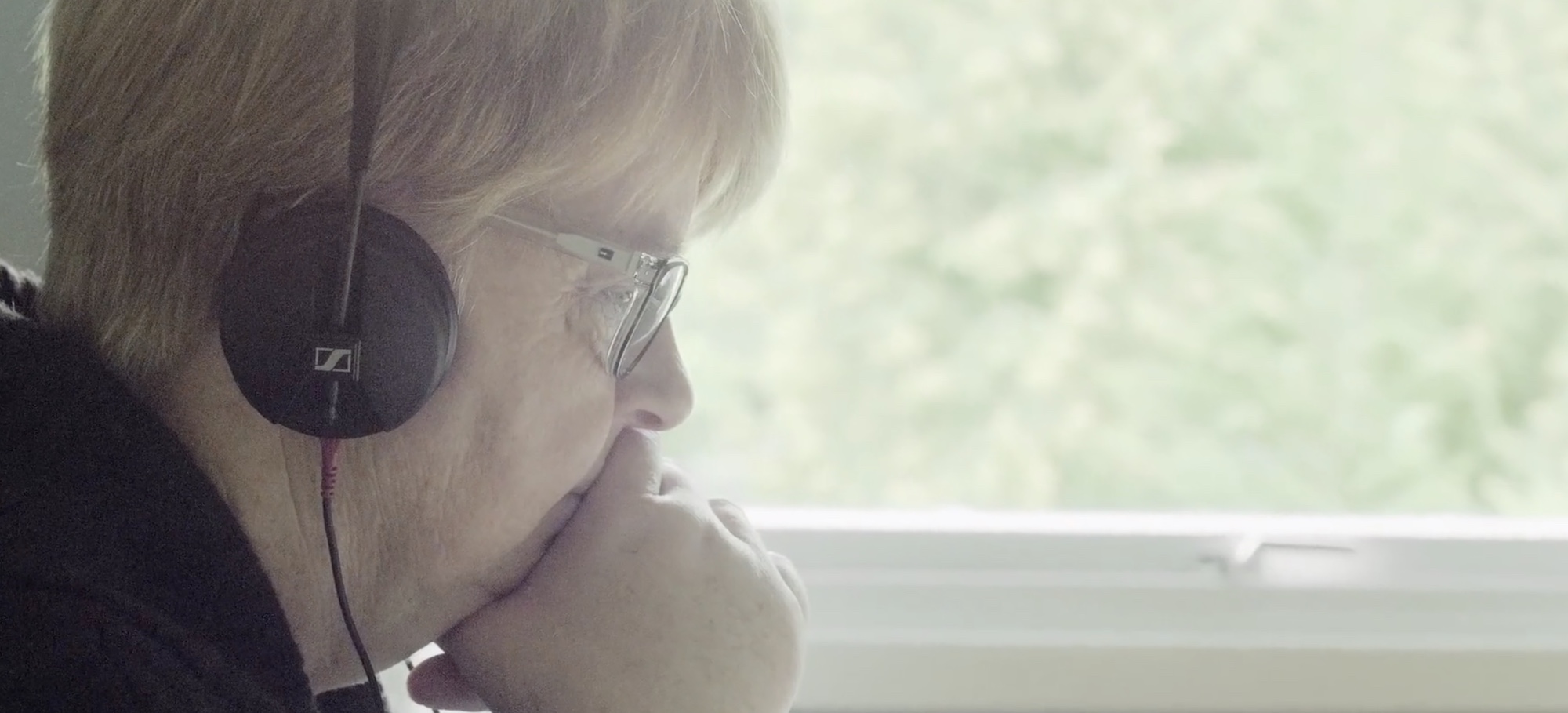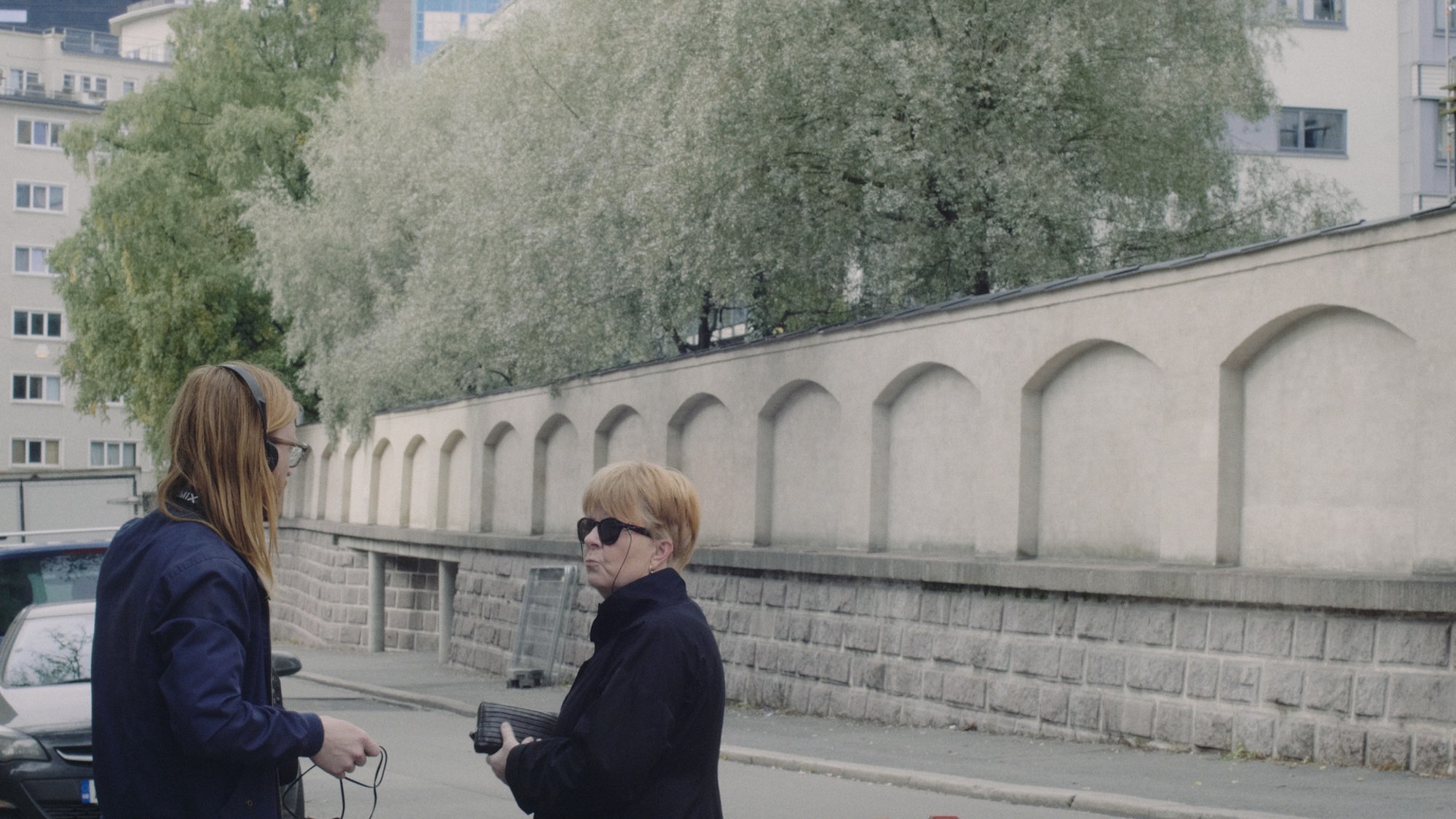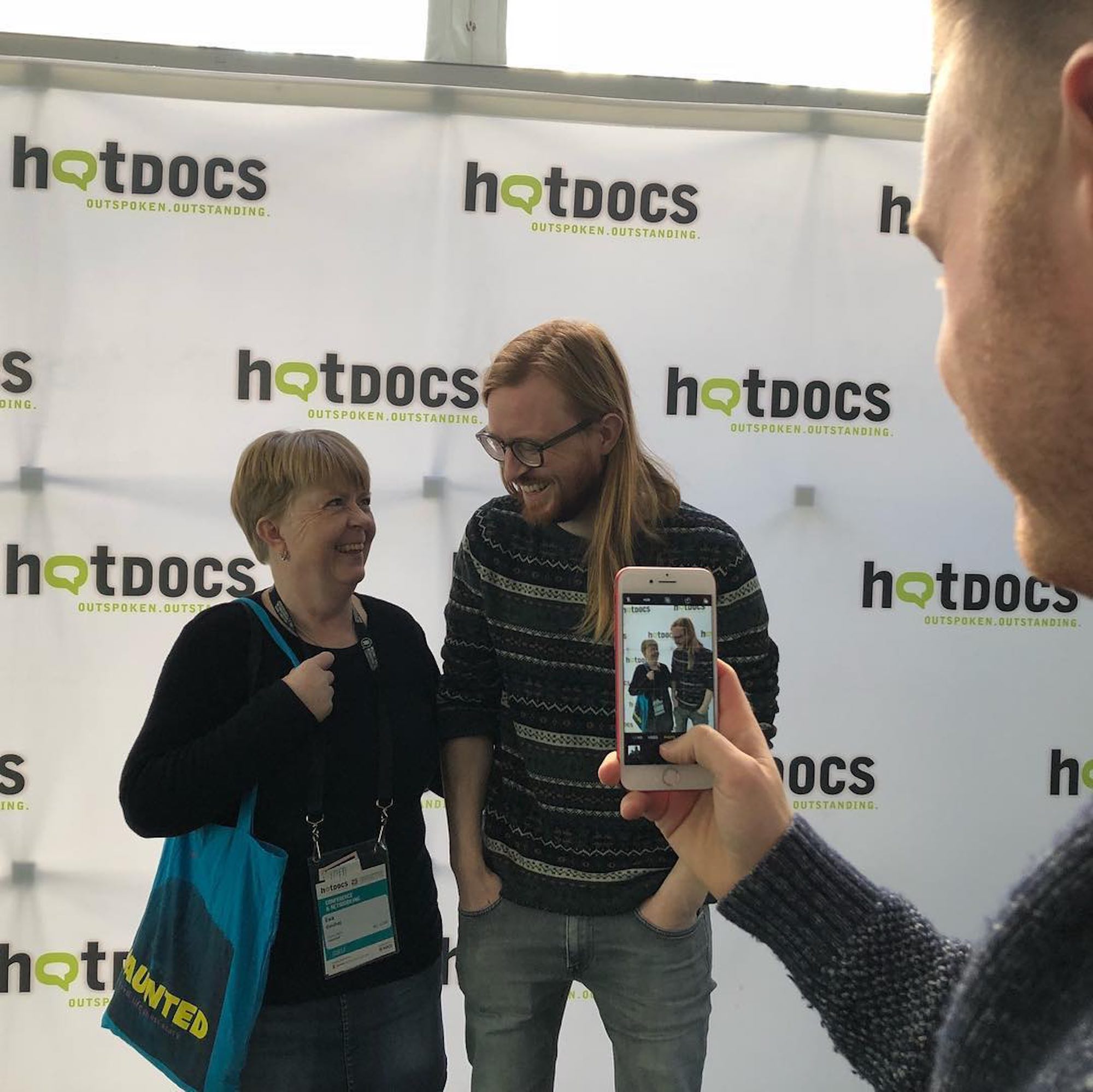
The story of Christian Einshøj’s Haunted is quite simple. A son returns home to film his mother retelling the story of how she saw the ghost of her son. The son then follows his mother as she goes about her daily routine in the aftermath. In actuality, this is a story about grief, separation and family ties. Einshøj films his mother with total observation, there is no forced perspective, no bias, just an unflinching portrait of a family affected. There’s also a great comedy to the narration and editing structure, which adds to the all encompassing feel Haunted channels. DN caught up with Einshøj to have an extensive dive into this mysterious and beautiful film.
You’ve been working on Haunted for many years, what was the initial idea and how did it develop over time?
When I first heard my mother’s ghost story, I immediately wanted to use it in a film. I was very eager to get started and quickly wrote the world’s shortest application for a small film fund that had an approaching deadline. It said ‘My mother has seen a ghost. I go visit her and film her going about her daily business in the suburb’.
By some miraculous mishap, I got around 3,500 USD to make the film and went back home the week after. Meanwhile, I had conceived of this fancy-pants conceptual idea of shooting the whole thing analog on my father’s old Hi-8 camcorder. I don’t know what this aesthetic approach was supposed to suggest narratively, but luckily it never came to fruition as the old machine broke down the night I arrived, and I was forced to use whatever else I could scrape together out of my father’s photo gear. That turned out to be an old Canon 5D and a wonky lightweight tripod. So, the film was then digital.

The very first shot I did, is the scene where my mother tells me the ghost story. I had imagined the whole film to consist of scenes like this, where my mother talks directly into the camera, but I quickly realised that this was a terrible idea. Her awareness of the camera changed her personality completely and rendered her performance incredibly unnatural.
At this point, I should probably explain that I am very, very stupid. I never have any idea what I’m doing, as I never have a plan. The advantage of not having a plan, of course, is that it doesn’t matter if you change your mind. So, instead of shooting my mother by herself facing the camera, I started including other people in the scenes and turning her back to the camera, and it seemed to work. Other unplanned stuff occurred during shooting, like the missing man in the mountain, but the biggest revolutions hereafter occurred in editing.
Could you talk about writing the narration and structuring the film?
When I got back home I had no idea as to how I would structure the film. So, I spent two years figuring that out. The main structuring element, I realised, is my visit back home. That would automatically provide a beginning and an end. The ghost story itself is also important, of course, as it provided some action, and served as a useful decoy for what I really wanted to tell, which was the story of my dead brother. My ambition was to make a film about death and loss but in a light-hearted way. The ghost story relieved me of the burden of having to ask my mother the impossible question, “So, how did it feel when your son died?”.
The biggest challenge of structuring was the movement from the lighthearted, somewhat comic opening, to the heavier story of my mother’s loss. The presentation of the four sons became an important tool here, as it underscores the theme of loss. My idea, which I’m sure is way too subtle for anyone to notice, let alone appreciate, was to have each son represent a further degree of separation. I’m the first, and the closest, since I’m staying for a couple of days, Fred is the second, only staying for an hour, Alex third, not even physically present, Kristoffer fourth, no longer there. Inside my brain, when editing, this meant I’d provided the film with a movement towards death. The missing man in the mountain provided a further amplification of this movement, as he’s first merely considered missing, and towards the middle of the film, more likely than not, perished.
This inflated trust in your own images is a common director’s disease, I think. I’ve certainly observed it a lot of times in others, working as an editor, which is also the reason I thought I’d be immune to it, but clearly wasn’t.
The narration is a big part of the film, obviously. Weirdly, the first cuts actually didn’t have any narration at all, and hardly any archive. Needless to say, this didn’t make a whole lot of sense, and my friends were kind enough to let me know. What I realised was that I expected total strangers, who didn’t know my family, to feel the sorrow of my mother’s loss, just by watching the images of her, alone in the house. This inflated trust in your own images is a common director’s disease, I think. I’ve certainly observed it a lot of times in others, working as an editor, which is also the reason I thought I’d be immune to it, but clearly wasn’t.
I was very reluctant about having a voice over. First, it’s very uncommon in Danish documentaries. I think it’s considered bad taste because it’s reminiscent of television. Second, I really hate hearing my own voice, and certainly don’t think that I’m especially interesting, which having a personal voice over might seem to suggest. I played alongside Charlie Tyrell’s My Dead Dad’s Porno Tapes at Hot Docs, and I know he’s dealt with the same reservations towards voice over. He slipped around the problem by opting for a neutral narrator, a sort of godlike storyteller with no relation to anyone in the family, like in The Royal Tenenbaums. That worked really well for his film, and I envied that possibility, but I don’t think it would have worked for mine, as I’m also physically present.

Joachim Trier says something interesting about voiceovers, that they liberate the image to do something else, not being “enslaved” by narrativity. He was talking about Terrence Malick, but it rang true to me as well. It allowed me to add stuff that was not present in the image itself. For example, the voiceover following the bathroom scene, where I’m presenting her sympathy for this unknown missing man in the mountain as a mystery. If this works as intended, my mother’s inner life then becomes a mystery too, something one wants to get deeper into. With the image alone, this wouldn’t have been there.
This mystery, or sense that my mother might be hiding something, was also strengthened, I think, by her ambivalence towards being filmed, in these behind-the-scenes bits of her where she’s only reluctantly agreeing to being recorded. They also added a lot of humor and an important resistance for my character. Bizarrely, most of this, including the opening scene, wasn’t added until the very final weeks of editing. That specific scene was five years old, and not even part of the actual editing project. It was lying around on some lonely hard drive and I hadn’t even looked at it since I shot it. When I finally did, it felt tailor-made for the film. Without this clip, it just looked like my mother agreed to being filmed right away, and there wasn’t really any visible resistance. As is often the case in documentaries, I find, the opening scene was the very final piece of the puzzle, the last thing that was added before final cut.
You must’ve shot a lot more footage than ended up in Haunted. How did you finally decide what made it in?
Actually not that much. But I did shoot a couple of scenes where she’s talking with people outside the family about the ghost. They were kind of interesting in their own way. It turned out that so many people had their own ghost stories. Every time we did one of these scenes, the person she was talking to would reply with an experience of their own. All of them totally sane and educated middle-class people with steady jobs and plain, suburban lives. An old neighbour, for instance, had recently lost her husband to cancer, and one night, when she’d walked downstairs for a glass of water, he was sitting right there in front of her, by the dinner table. Like my mother, she wasn’t afraid but felt sort of comforted by the visitation. These stories were good but didn’t belong in the film, as they didn’t reflect back on my mother and her loss.

That became the guiding principle for which scenes to keep, and the reason both my brothers stayed in. I did shoot one of these storytelling scenes with my dad as well, but it wasn’t very interesting. Also, the film is about my mother’s loss of a son, so he didn’t really seem relevant in that equation. Her alive sons are though because they reflect what she’s lost.
Watching Haunted, I was struck by how personal the film is, yet you don’t try and shoot with a bias or like you’re trying to achieve something, it’s very observational, undirected, and aware, what was your creative approach to shooting the footage?
This is probably due to the fact that I didn’t have a plan. But, really, I think I was just very interested in my mother. Growing up, I don’t think I had this interest, I didn’t feel we had a lot in common, and as a boy, I was naturally more drawn to my father. When I shot this film I had just turned thirty, it had been ten years since I moved away from home, and suddenly I was considering the home in which I grew up with a renewed gaze. I don’t know why this change occurred, but it was very powerful. It was like this place that I knew so well, was suddenly completely foreign.
Capturing reality to me is not a matter of being a fly on the wall, but to stage situations that allow an amplified version of reality to play out.
This curiosity freed me to be more of an observer and to look without intruding. But at the same time, there is a lot of directing. None of these conversations would have occurred by themselves. They’re staged, but that doesn’t make the result less real. Capturing reality to me is not a matter of being a fly on the wall, but to stage situations that allow an amplified version of reality to play out.
You’ve cited Ross McElwee and Ozu as inspirations, what is it about those two filmmakers that you wanted to draw from?
Well, they’re certainly both obsessed with the subject of middle-class family and have made arguably some of the best films ever on that subject. Ozu elevates the everyday and common to something sacred and poetic. I support the unverifiable claim that Tokyo Story is the truest depiction of human existence ever committed to film.
It’s hard to avoid the influence of McElwee when you’re a character in an autobiographical documentary about your own family. In relation to form, I guess I’m drawing on Sherman’s March. I’ve actually only ever seen it once, and that was more than ten years ago, but ever since I’ve dreamt of making a funny, but earnest and precise portrait of the place I came from.
What does your mother make of the finished film?
At first, she was actually very disappointed. She didn’t say that she hated it outright, but when I showed her the final cut, her response was that she didn’t understand it and that she didn’t expect anyone else too. The look on her face was one of puzzlement, frustration and mild anger. After two years of editing, this was less than encouraging. I think she was hoping for a more straightforward biography kind of thing, even though I never pretended to be making anything like that. If the aim of the project was to bridge some gap of understanding between us, it had apparently failed miserably.
Her attitude changed, however, after the premiere in Toronto. We sat next to each other, and at one point during the screening, two girls in the row behind us starts crying. My mother probably wasn’t paying much attention to the film, seeing that it didn’t make much sense to her, so she had ample opportunity to notice the weeping girls and nudged me in the side to call my attention to it. From the look on her face, it was clear that she was utterly amazed that people not only understood it but felt an emotional impact. Her fears of my incompetence could be put to rest.

Now she is a very big fan and eagerly travels for festival screenings. In Sweden, she suddenly appeared out of thin air without even notifying me. She manages the film’s Facebook page and keeps very up to date with whatever is happening with the film. Last month it won an award in Iceland, and I got the news in an early morning text from her, three hours before the official notification reached my inbox. But she still doesn’t understand the film and is unceasingly impressed that others do.
What’re you working on next?
More family stuff! This time with my brothers and father, for a feature length project. With a little luck, I’ll finish it sometime next year. But that’s it. After this one, no more family films. I’ve been working on this project since 2008, and before that my father was filming and shooting photographs obsessively for 20 years. There’s a limit to how much scrutiny one household can take, and in our case, I think it’s about to be reached. Next time I’ll find subjects that I’m not even remotely related to.


